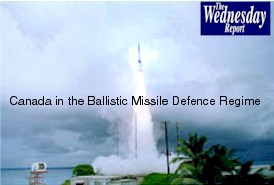Standardizing Global Radio Frequency Identification
Boeing is sponsoring a series of symposiums worldwide to build consensus about standards for utilizing Global Radio Frequency Identification (RFID) technology on commercial airplanes.
Boeing and Airbus are collaborating on this effort. They've agreed to require Air Transport Association (ATA) SPEC 2000 automated identification and data capture guidelines and to jointly host the sessions.
"This technology offers the aviation industry many proven benefits, with the ultimate objective being continued safety, airworthiness and operational efficiencies for commercial airplanes," Kenneth Porad, RFID program leader for Boeing Commercial Airplanes, said. "By
working together, Boeing and Airbus benefit by avoiding conflicting requirements with mutual customers and suppliers."
RFID involves 'smart label' identification tags installed throughout an airplane that store data including part and serial numbers, manufacturer codes, country of origin, date of installation and maintenance and inspection information. The tags contain a microchip
and antenna and offer significant advantages over similar technologies, including no line-of-sight requirement for data transmission and a dynamic read/write capability.
The forums are June 8-9 in Atlanta, August 10-11 in Hong Kong, and October 19-20 in Munich. Participants will include airlines, aviation suppliers, regulatory agencies and third-party maintenance providers.
The events will offer detailed background information on recently completed in-service evaluations of RFID technology and will address industry concerns such as interference, certification, and standards.
China Airlines To Add Two More 747-400 Freighters
Boeing Company has confirmed an order by China Airlines for two Boeing 747-400 Freighters, valued at approximately $425 million at list prices.
The new airplanes are scheduled for delivery in 2006. In total, China Airlines has purchased 38 747-400s, 21 freighters and 17 passenger models. The airline has ordered more 747-400 Freighters than any other airline and currently has one of the world's largest
747-400 Freighter fleets.
"The 747-400 Freighter has proven to be an excellent performer for China Airlines," said Philip Wei, president, China Airlines. "We anticipate continuing increases in cargo demand and expect that these new freighters will be significant contributors to China
Airlines' profitability."
The Taiwanese carrier now has total unfilled orders for 12 747-400 freighter and passenger models, with four deliveries this year.
"Our great ‘working together' relationship with China Airlines has been in place for more than 37 years," said Larry Dickenson, senior vice president, Boeing Commercial Airplanes Sales. "The airline's continued investment in expanding their 747-400 Freighter
fleet is an example of their unrelenting commitment to high quality and reliable service."
The 747-400 Freighter family has no peer among today's cargo airplanes with nearly 100 in service worldwide, operated by the world's leading air cargo carriers. The 747-400 Freighter can carry 124 tons (113,000 kg) of cargo up to 4,450 nautical miles (8,240
km).
In all its versions, the world's fleet of 747 Freighters -- more than 260 in all -- provides almost half the world's freighter capacity. The 747 Freighter is a key element in the development of today's air cargo marketplace.
Canadian Helicopters EMS Service Excels
Canadian Helicopters was honored last month by Sikorsky Aircraft Corporation for attaining more than 80,000 accident-free flight hours in its Aeromedical Critical Care helicopter operations.
The accomplishment was commemorated in a plaque presented to Rob Blakely, Canadian Helicopters Vice President of Operations by Jeanne Connor-Osborn,
Sikorsky's Emergency Medical Services (EMS) Program Manager. Also in attendance at the tribute were representatives of
the Ontario Ministry of Health, the Nova Scotia Ministry of Health.
Canadian Helicopters, the largest EMS helicopter provider in Canada, has 25 year of aeromedical experience. It operates 12 medical Sikorsky S-76 helicopters for the provincial governments of Ontario and Nova Scotia. More information can be found at
www.CanadianHelicopters.com.
"Canadian Helicopters has shown an excellence second to none in this noble and necessary mission," said Tommy Thomason, Vice Present for Civil Programs at Sikorsky. "And we are proud to provide the S-76, which is recognized for its outstanding EMS capability in terms
of speed, cabin volume and shape, and low door sill."
Sikorsky Aircraft Corporation, based in Stratford, Conn., is a world leader in helicopter design, manufacturing and service. Sikorsky is a subsidiary of United Technologies Corporation, of Hartford, Conn. (NYSE:UTX), which provides a broad range of high-technology
products and support services to the aerospace and building systems industries.
MH-60s Hits 50,000 Hr. Air Time Milestone
The U.S. Navy MH-60S fleet combat support helicopter passed a significant milestone recently by eclipsing the 50,000 flight hour mark.
"The significance of this event is particularly noteworthy because the program went from the drawing board to fleet introduction in just a few years," said Paul Martin, Sikorsky's Senior Vice President for Government and Advanced Development Programs. "The aircraft
was initially fielded simultaneously in three separate locations and has exhibited exemplary readiness and safety records."
MH-60S fleet combat support helicopters are serving the U.S. Navy around the world. Many of the aircraft supported Operation Iraqi Freedom. In addition, MH-60S crews have won numerous Sikorsky Winged-S Rescue Awards, continuing a tradition dating from 1950.
The MH-60S will provide flexibility for reconfiguration, serving in combat search and rescue as well as providing Naval Special Warfare support to joint theater operations. The helicopter will anchor the fleet logistics role in carrier strike group and amphibious
ready group operations.
Along with its counterpart, the Sikorsky MH-60R, the MH-60S will form the basis for the Navy's Helicopter Concept of Operations (CONOPS) and will replace all other existing Navy helicopters by 2010. Together, the aircraft will provide a full array of maritime
helicopter capabilities, including anti-submarine warfare (ASW), anti-surface ship warfare (ASuW), medevac, logistics, Combat Search And Rescue, and Airborne Mine Countermeasures (AMCM).
The MH-60S is a baseline BLACK HAWK configuration with SEAHAWK engines, rotor system and dynamic components, including the SEAHAWK's automatic rotor blade folding system, folding tail pylon, improved durability gearbox, rotor brake and automatic flight control
computer. This aircraft is the latest in the H-60 family of aircraft whose ruggedness, survivability and versatility have made the H-60 the world's standard utility helicopter.
In September 2002, the U.S. Navy granted the MH-60S helicopter program a Milestone III Full Rate Production Decision authorizing the Navy's purchase of up to 271 MH-60S aircraft. The Navy has already ordered 119 aircraft and 64 helicopters have been delivered as of
April 2004.
The MH-60S is currently flying with ship-based detachments from five Navy squadrons located in Guam, San Diego, and Norfolk, Va.
Northrop Grumman Conference Today - Live on the Web
Northrop Grumman Corporation will hold its annual Institutional Investor Conference in New York City on Wednesday, May 12. Company senior management will discuss current performance and the outlook for 2004 and 2005. The conference will begin at 8 a.m. EDT and
will be webcast live on the company's Web site at www.northropgrumman.com
Raytheon Chief Headed for Major Appointment
U.S. President Bush has announced he intends to appoint William H. Swanson to the National Security Telecommunications Advisory Committee (NSTAC). Swanson is chairman and CEO of Raytheon Company. NSTAC is composed of up to 30 industry leaders appointed by the
president. In its advisory role to the president, the NSTAC provides analyses and recommendations on a wide range of policy and technical issues related to telecommunications, information assurance, infrastructure protection, and other national security and emergency
preparedness concerns.
In addition to his appointment to the NSTAC, Swanson is a member of the Secretary of the Air Force Advisory Board, a trustee of the Association of the U.S. Army, and a member of the Board of Governors of the Aerospace Industries Association. He also is a member of
the CIA Officers Memorial Foundation board of advisors and associate fellow of the American Institute of Aeronautics and Astronautics. Swanson joined Raytheon in 1972 and has held a wide variety of leadership positions. Before becoming chairman in January 2004, he
was CEO and president of the company.
Raytheon Company, with 2003 sales of $18.1 billion, employs 78,000 people worldwide
Raytheon's SeaVue Radar Aboard Predator Variant
Raytheon Company has successfully integrated and demonstrated its SeaVue maritime surveillance radar and AAS-52 Multi-spectral Targeting System (MTS-A) aboard a General Atomics Aeronautical Systems Mariner unmanned aerial vehicle (UAV), a derivative of the
Generals Atomics Predator B UAV.
"The successful April flight demonstration from El Mirage, Calif., is a perfect example of what a motivated team can accomplish," said Jack Kelble, president of Raytheon Space and Airborne Systems. "In order to meet an important demonstration request, we installed
and integrated the SeaVue and MTS-A mission systems, and then performed the necessary flight verification tests in only three weeks. This is a remarkable engineering achievement."
In addition to demonstrating the Mariner UAV's performance and operational flexibility at various altitudes, the flight highlighted the sensors' combined maritime surveillance capabilities and network connectivity when operating together on one platform. This flight
demonstrated many of the capabilities outlined in the U.S. Navy's Broad Area Maritime Surveillance requirement.
The SeaVue family of radars is designed to detect small maritime targets in high seas and provide superior maritime situational awareness. The system's flexible architecture enables it to meet a wide variety of surveillance requirements and support multiple
missions. Depending on the configuration, typical missions include maritime surface search and target tracking, ship imaging and classification, overland mapping, search and rescue, weather avoidance and navigation, harbor and economic zone surveillance, and
environmental monitoring such as oil spill detection and ice flow mapping. SeaVue was designed as a light weight, low cost, surveillance radar that can be easily installed on smaller aircraft, helicopters, and unmanned vehicles. To date, more than 100 SeaVue radar
systems are in operation around the world.
The AAS-52 MTS-A is a multi-use electro-optical, infrared, and laser detecting-ranging-tracking set, developed and produced for use in military systems. Using state-of-the-art digital architecture, this advanced electro- optical/infrared (EO/IR) system provides
long-range surveillance, target acquisition, tracking, rangefinding, and laser designation for all tri-service and NATO laser-guided munitions.
As a premier mission systems integrator, Raytheon's family of unmanned technologies provides customers with netted solutions for Intelligence, Surveillance, and Reconnaissance (ISR), Precision Engagement, and Homeland Security operations. Key technologies include:
ground and airborne command and control systems with satellite connectivity; integrated Global Positioning Systems (GPS); netted weapons and fire control solutions; signals intelligence; stand alone and integrated EO/IR and radar sensor systems; self- protection
suites; and communications systems.
Raytheon Company's Space and Airborne Systems (SAS) designs, develops and manufactures advanced systems for precision engagement; missile Defence; and intelligence, surveillance, and reconnaissance. Headquartered in El Segundo, Calif., SAS has 11,000 employees and
additional facilities in Goleta, Calif.; Forest, Miss.; Dallas, McKinney and Plano, Texas; and several international locations.
This Week's Entire Issue
|

